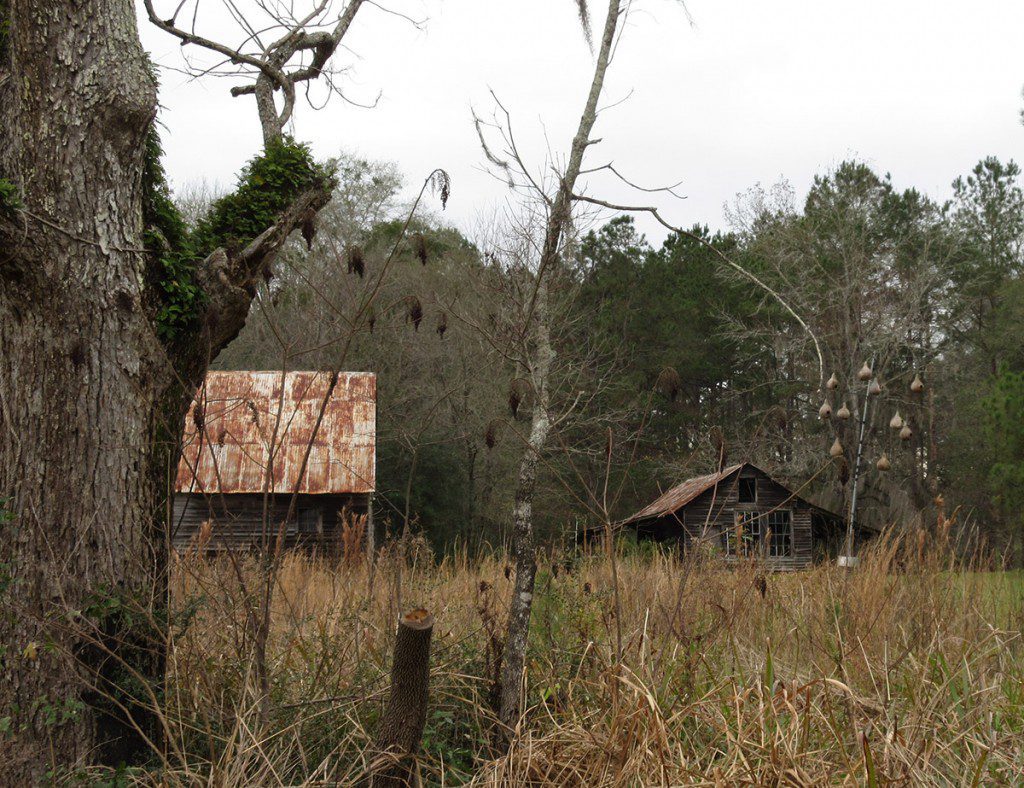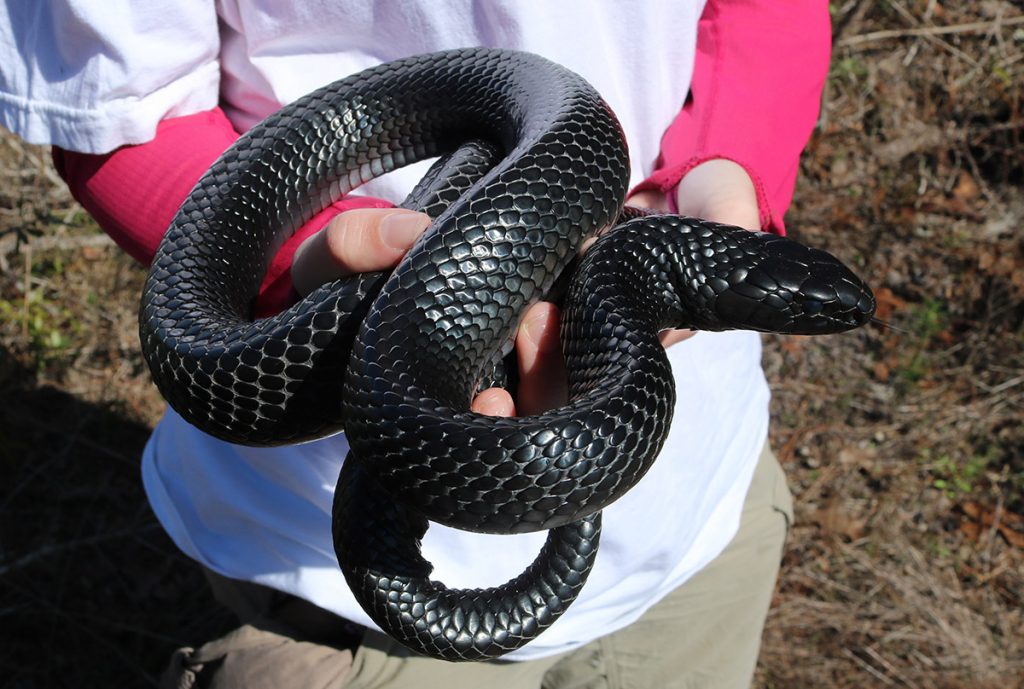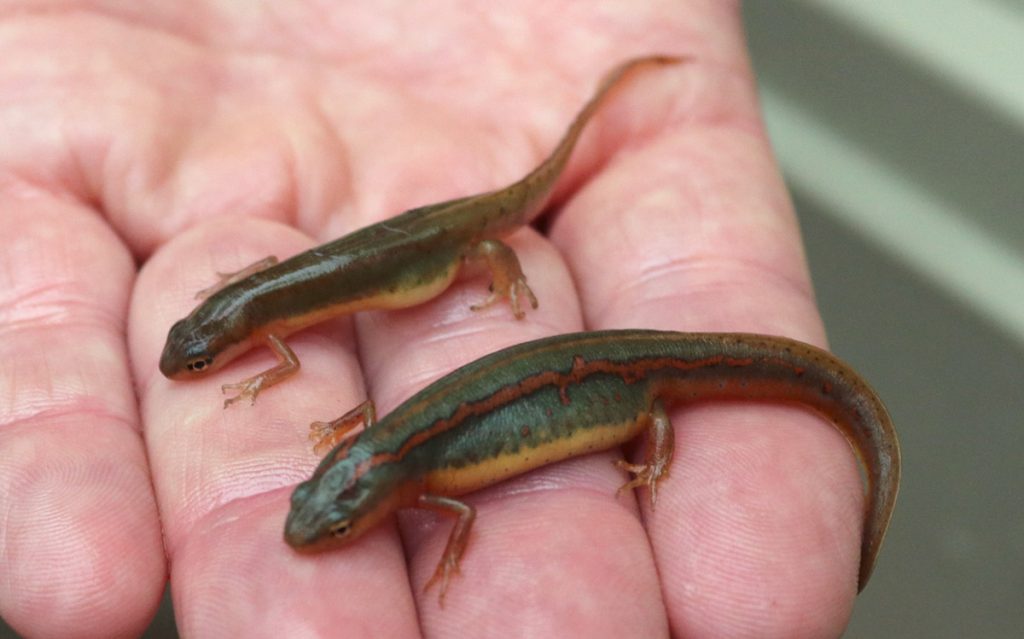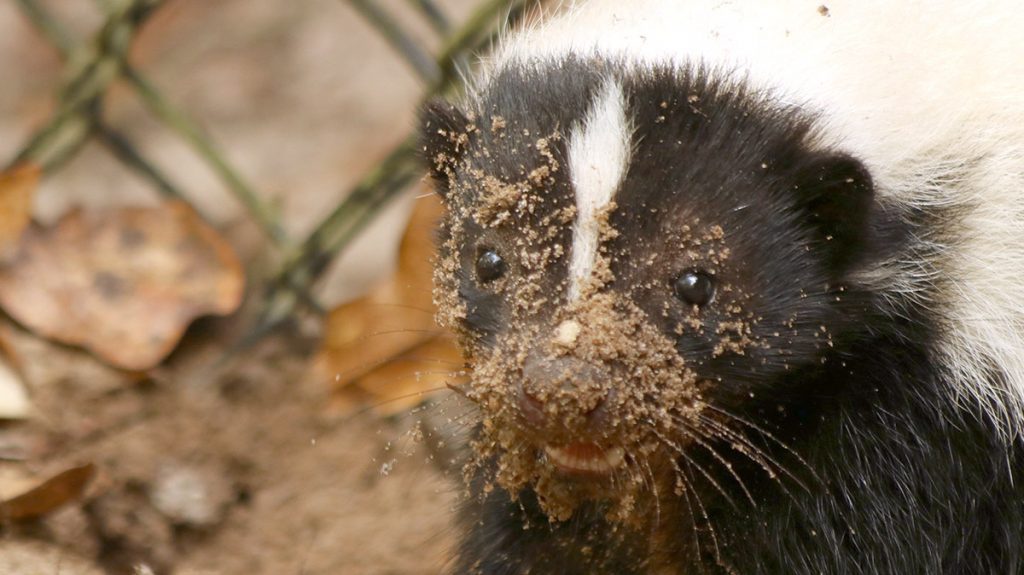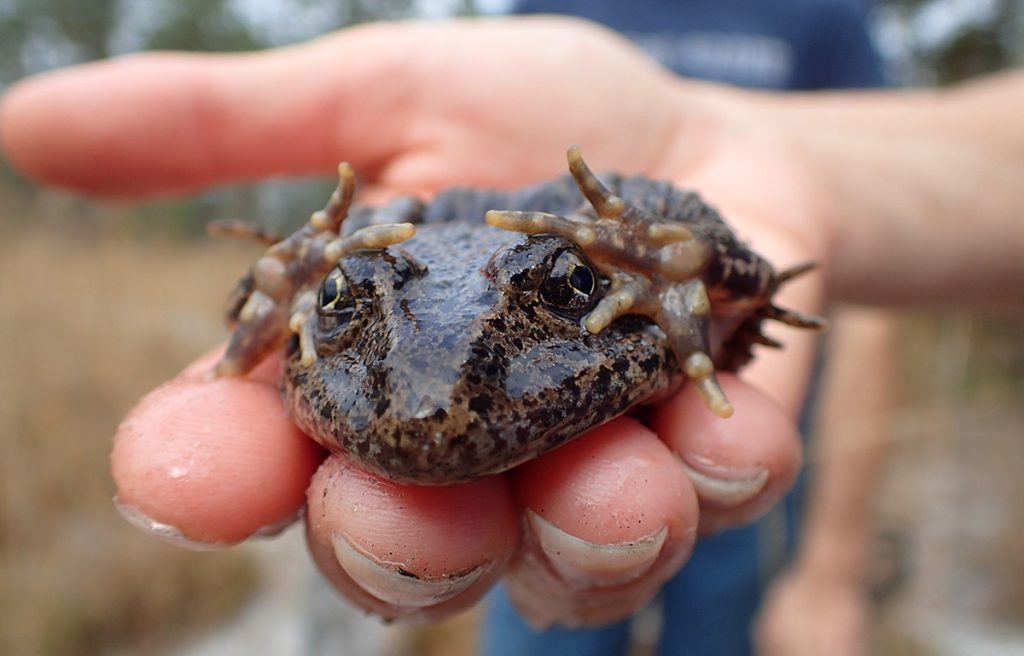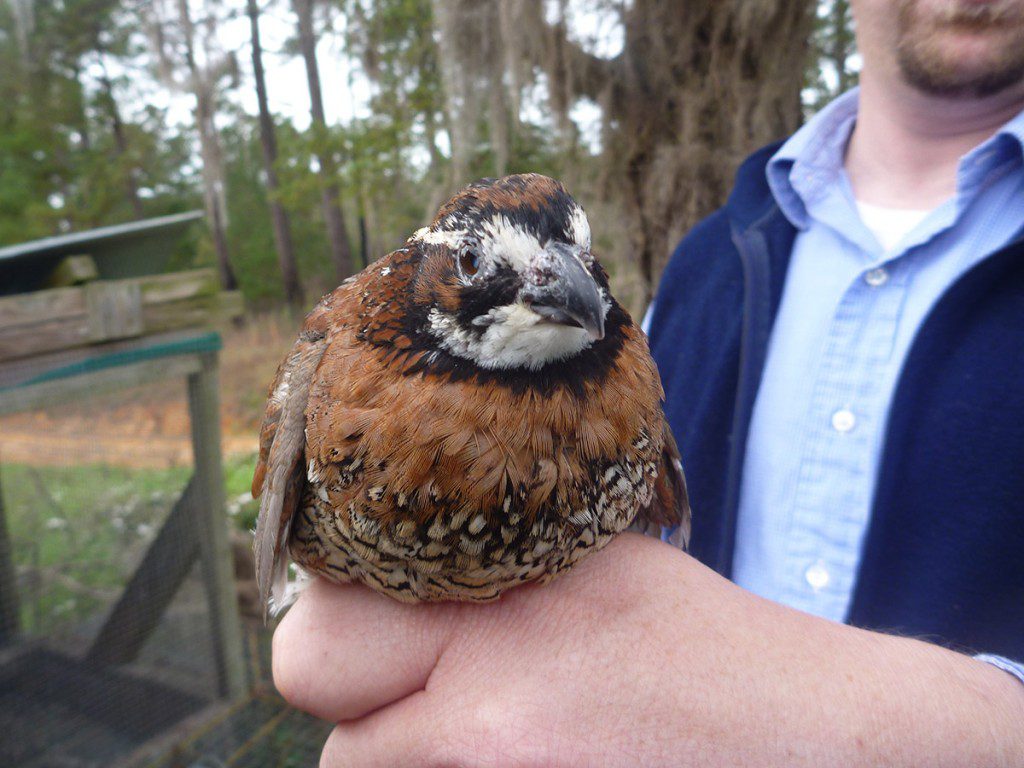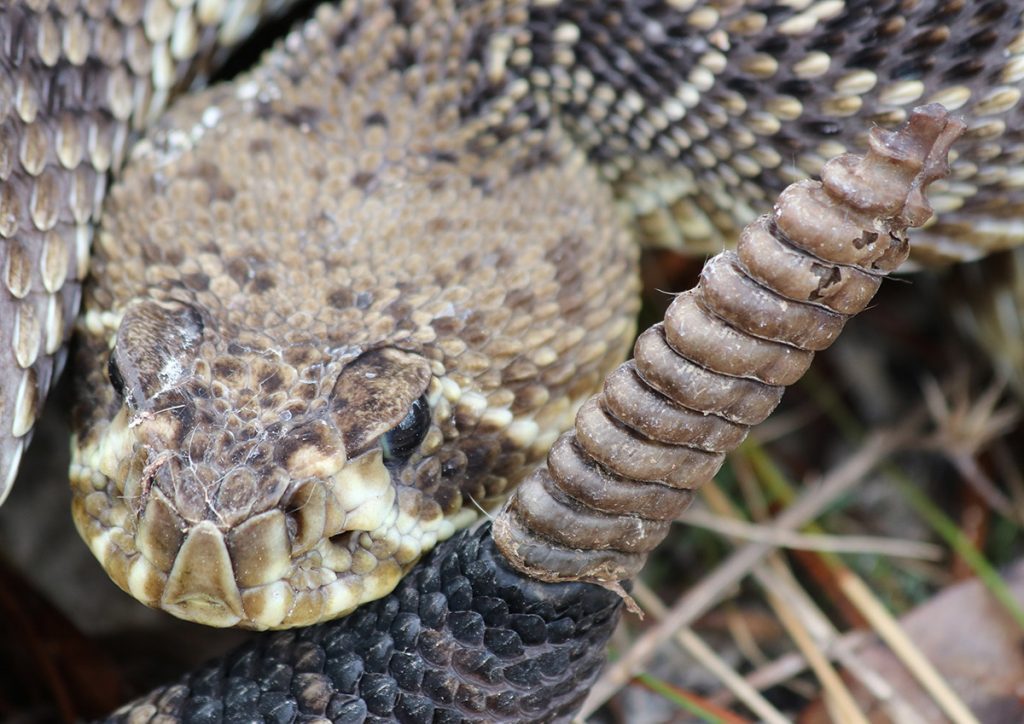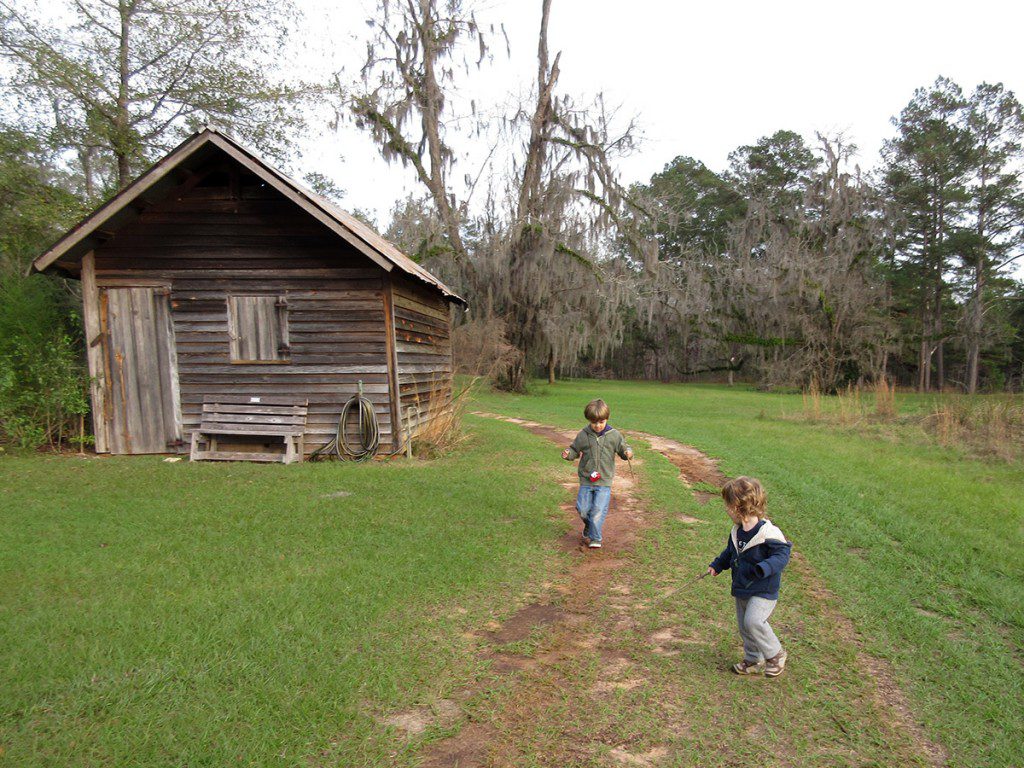Welcome to Part 3 (of 10) of Roaming the Red Hills, which originally aired on the March 31 episode of WFSU’s Local Routes. Over ten 3-minute videos, we’ll explore the natural soul of the Red Hills of Florida and Georgia, from the pine uplands down to its rivers, lakes, and farms. Thanks to Tracy Horenbein for creating original compositions for this video series, and to Belle and the Band for letting us use their song, “All Come In”, from their “Fallen Angel” album. The series is narrated by Jim McMurtry.
Funding for Roaming the Red Hills was provided by Tall Timbers Research Station and Land Conservancy.
Rob Diaz de Villegas WFSU-TV
So far, we’ve been looking at the birds of the longleaf ecosystem. Fire moves slowly through the undergrowth of this habitat, giving birds that live there, like bobwhite quail and Bachman’s sparrows, enough time to fly to safety. Smaller critters may run away. But some animals aren’t really geared towards running. Sometimes, the safest escape lies below.

Walking among the grasses, flowers, and forbs growing in a longleaf pine forest, you’ll want to keep an eye out for gopher tortoise burrows. They’re just big enough for your foot to slide in and trip you. In the video above, we visit a few burrows at Birdsong Nature Center in Grady County, Georgia. Our group of local families are led by two researchers: Dr. Lora Smith and Jennifer Howze. They serve on the Gopher Tortoise Council, an organization that works to conserve, research, and educate the public about a species in decline.
“They love to live on well drained, sandy soils where there are a lot of pine trees and a lot of light,” Lora says. “And that’s the same place that people want to live.” While the gopher tortoise has been affected by loss of habitat, it can make its home on developed land. Part of what the Gopher Tortoise Council does is educate landowners about best practices for coexisting with them.
The reason gopher tortoise decline is of concern is that they are a keystone species. Their burrows may house any of 350 different animal species. We see some of that when Jennifer and the kids guide their tortoise-cam down and find crickets, or in the videos provided by the Joseph W. Jones Ecological Research Center (where Lora and Jennifer work). Snakes, mice, birds, and insects all find shelter inside of these burrows. A good warm burrow can be an inviting place to a small critter when predators abound, or when the weather gets rough. Without the gopher tortoise, many species would have a harder time making a living in the longleaf ecosystem.
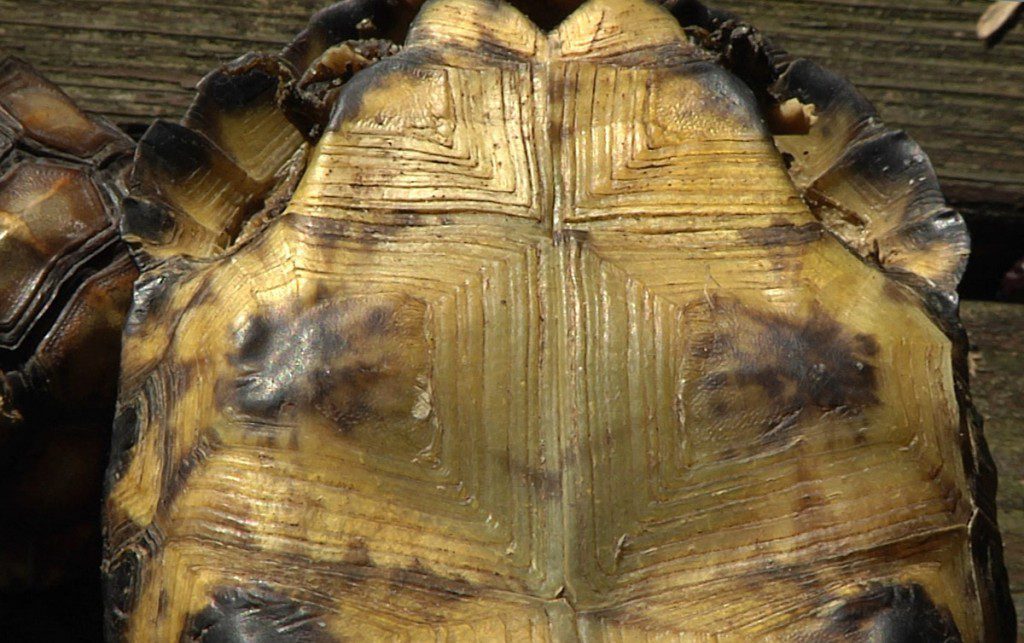
Gopher Tortoises at a Glance
- They are the only tortoise native to the American southeast.
- They are a protected species. If you find a burrow on your property, there are different requirements/ resources in Florida and in Georgia. The Gopher Tortoise Council has resources for coexisting with gopher tortoises on your property, including a list of forage plants you can provide them.
- Gopher tortoises can live between 40-60 years, reaching sexual maturity between 15-20. They average between 9-11 inches in size.
- It can be difficult to accurately age a gopher tortoise. As turtles age, each plate of the shell, or scute, gains a line. In theory, you could count the lines much as you would count the rings in a tree. However, all of the movement in and out of their burrows wears the lines down and smooths their shells over time.
- Gopher tortoises burrows are only as large as the tortoises who dig them. Tortoises can dig a burrow in a couple of days. Burrows can be as long as 40 feet and as deep as 10, though the depth is dependent on the height of the water table below ground.
- Gopher tortoises burrows are only as large as the tortoises who dig them. Tortoises can dig a burrow in a couple of days. Burrows can be as long as 40 feet and as deep as 10, though the depth is dependent on the height of the water table below ground.
- Gopher Tortoise Day is April 10.
- The gopher tortoises is Georgia’s state reptile.
Birdsong Nature Center: Exploring Red Hills Ecosystems
This video was specifically about gopher tortoises, but I did want to say a little more about our setting. Birdsong Nature Center is an essential Red Hills location. Ed and Betty Komarek, and Ed’s brother Roy, purchased Birdsong Plantation in 1938. Four years earlier, Ed had been hired by Herbert Stoddard to assist him as he devised management practices for maximizing quail populations on Red Hills hunting plantations. Stoddard’s work remains the basis for how longleaf habitat is managed today, emphasizing prescribed fire to open up the understory.
The Komarek family restored overgrown forestland and landscaped the area closer to the house to attract birds and butterflies. While most of the Red Hills forest is on private land, Birdsong is open to the public. A month after we taped the segment above, I took my family there.
My younger son, Xavi, fell asleep on the way up from Tallahassee, so I explored with Max, who is 5. It was quail season, and we heard booms echoing through the forest from neighboring plantations.
“Are those fireworks?” Max asked, excited.
“No, not fireworks.”
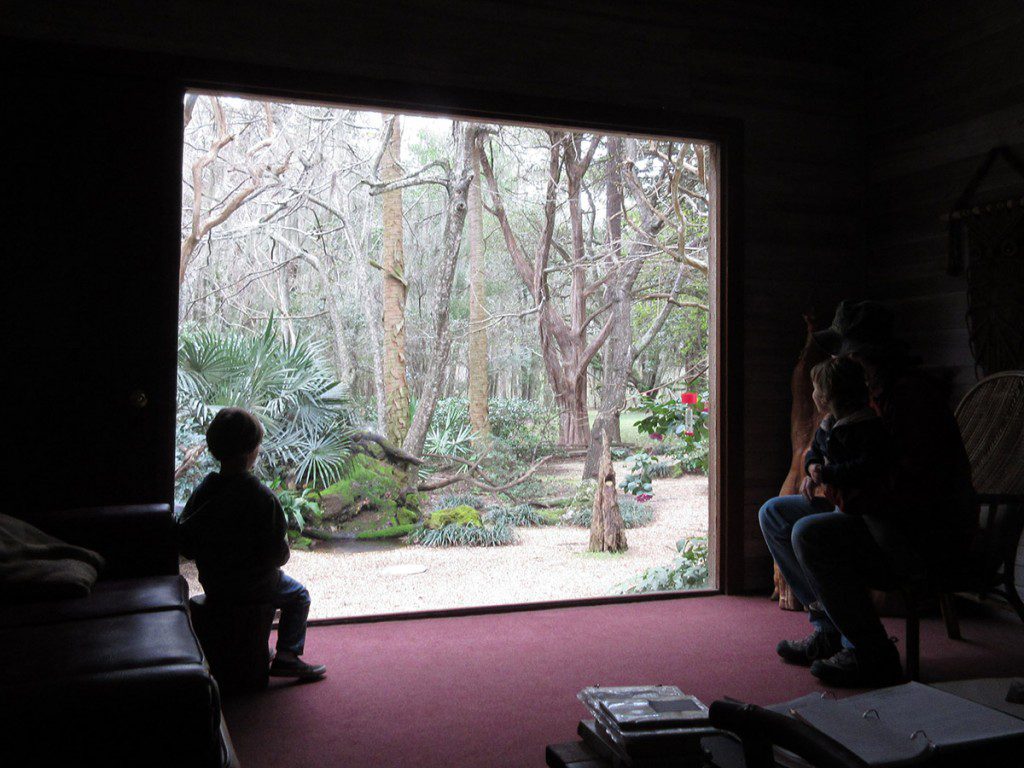
When Xavi woke up, we all went to the Betty Komarek Bird Window. Built into the side of the plantation house, the Bird Window looks out over a manicured garden centering on a fountain. In the video, we see a tufted titmouse and a grey catbird splashing around. The window is big and clean, and I kept nervously pulling my children back as they leaned forward to look around.
Betty Komarek designed the window, as well as similar bird windows at Tall Timbers Research Station & Land Conservancy and the Tallahassee Museum.
Afterwards, we let the boys run around outside by the old barn, where bluebirds were flitting about. I returned to that same field just a couple of weeks ago for the Old-Timey Plant Sale. There, I bought some native flora in the hope of attracting native pollinators to my garden (I recently took a look at the butterflies of the Red Hills, and wrote about the butterflies that visited my garden last year). I also bought herbs (Coneflower Farms) and tomatoes (Turkey Hill Farm) from the Red Hills Small Farm Alliance table. The RHSFA is featured in the third installment of Roaming the Red Hills, which airs April 14 on Local Routes (7:30 pm ET). We’ll be exploring the past and present of agriculture in the Red Hills, as well as our local sinkhole lakes. Next week, we explore an old growth slope forest at the headwaters of the Aucilla River, and head down the Ochlockonee River.
Animals that use Gopher Tortoise Burrows
As a keystone species, gopher tortoises can act as a gateway to learning about other animals. The gallery below is made up of images of some of these species, species we’ve covered in stories. Click on the species name to jump to those stories.

